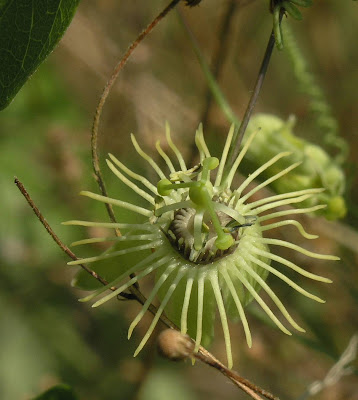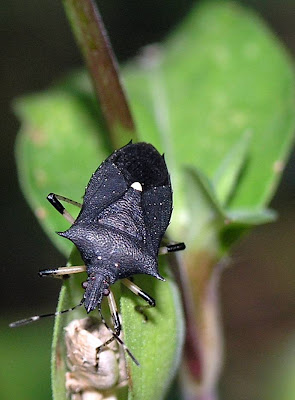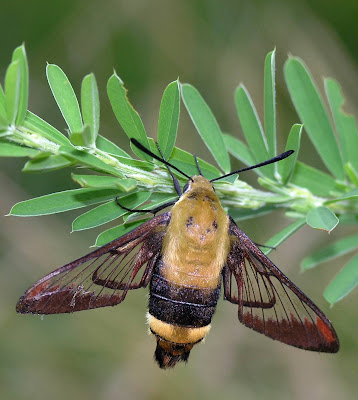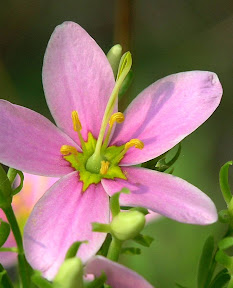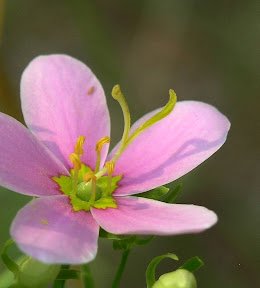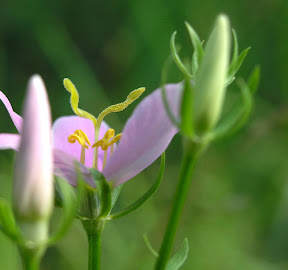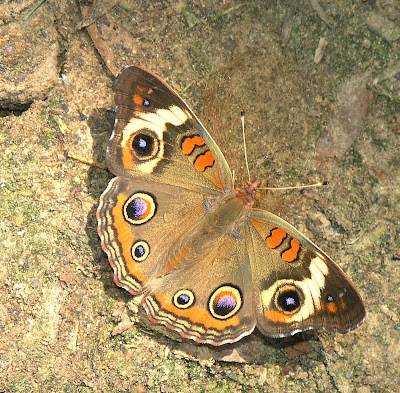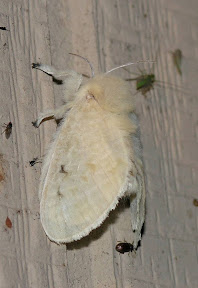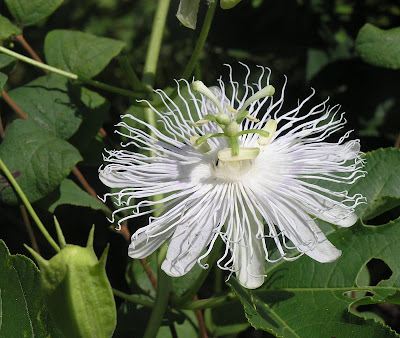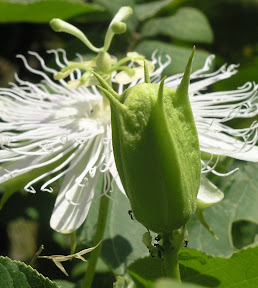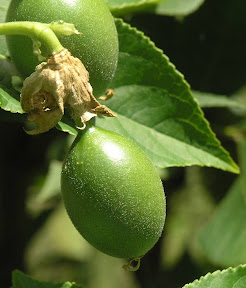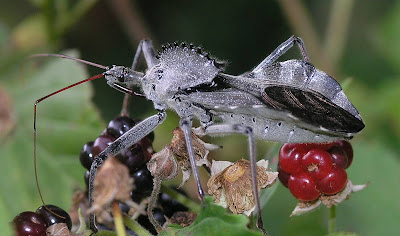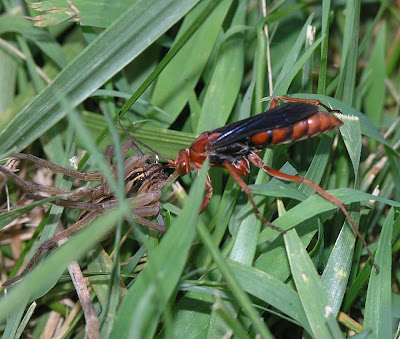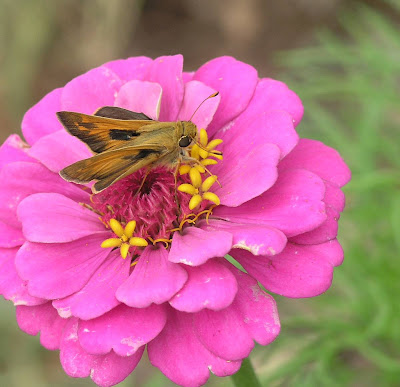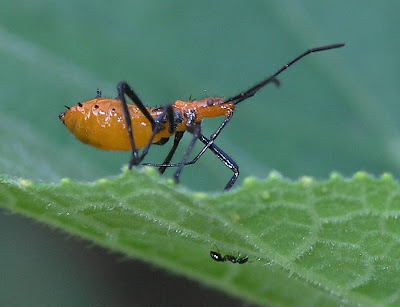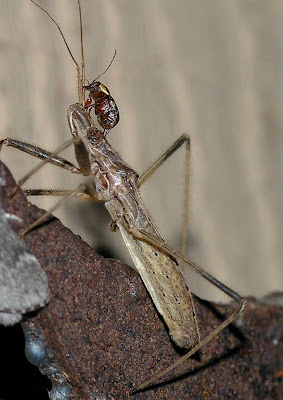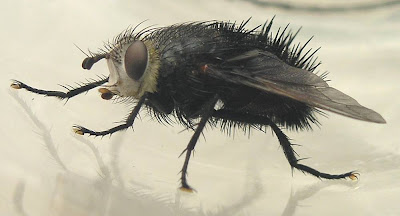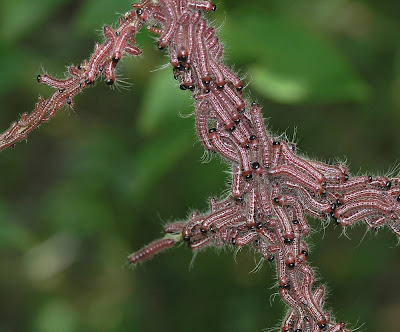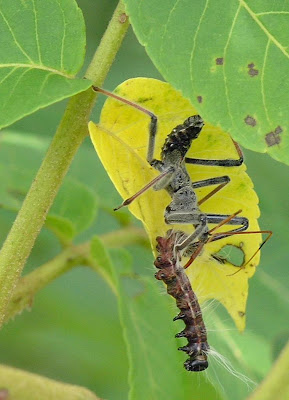
Giant Walking Stick (Megaphasma denticrus)
Walking sticks are primarily tropical, but several species are found in the more temperate regions of North America. One usually sees males like one above because, as is the case with many insect, males are out and about searching for females. Giant Waling Sticks are the longest insects found in NA. Female can grow up to around 7" long and are less colorful and gracile (more blunt and bulky) than males. While this critter appears very conspicuous while crawling around on the porch, he can blend in well when among twigs and leaves.
Walking sticks are generally harmless plant eaters. The "pincers" at the end of his abdomen are actually claspers for holding onto a female during mating. An exception to the harmless generalization is the Two-striped Walkingstick (Anisomorpha buprestoides) which is found in the far southeastern U. S. (mostly Florida). Members of this genus can deliver a chemical spray to the eyes that can cause corneal damage.
